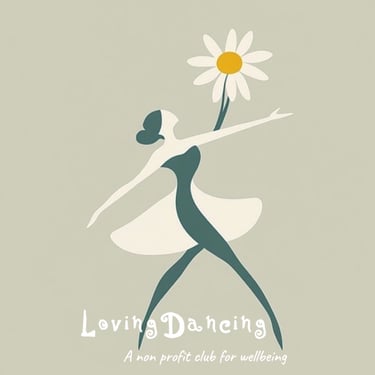Nutrition for dance athletes
*Nutrition for dance athletes* is critical, as dancers require a well-balanced diet to maintain energy, strength, flexibility, and overall health. The demands of dance are similar to those of other high-intensity sports, with a need for both physical endurance and mental focus. Proper nutrition also plays a vital role in injury recovery and prevention.
NUTRITION
Mrs DL
10/7/20243 min read


Key Nutritional Considerations for Dancers:
1. Balanced Macronutrients:
- Carbohydrates: Carbs are the primary fuel source for dancers, especially during long rehearsals or performances. Whole grains, fruits, vegetables, and legumes should be the main sources of carbohydrates to provide sustained energy.
- Proteins: Protein is essential for muscle repair, recovery, and building lean muscle mass. Dancers should include high-quality protein sources like lean meats, fish, eggs, dairy, tofu, beans, and legumes in their diets.
- Fats: Healthy fats are necessary for joint lubrication, brain function, and long-lasting energy. Sources such as nuts, seeds, avocados, olive oil, and fatty fish (like salmon) are ideal for dancers.
2. Micronutrients for Bone and Muscle Health:
- Calcium: Essential for maintaining strong bones, especially since dancers are at risk of stress fractures. Good sources include dairy products, leafy green vegetables, fortified plant milks, and almonds.
- Vitamin D: Supports calcium absorption and bone health. Dancers can get Vitamin D from sunlight exposure, fortified foods, and fatty fish.
- Magnesium and Potassium: These help with muscle contraction and preventing cramps. Foods rich in magnesium include spinach, nuts, and seeds, while bananas, potatoes, and oranges provide potassium.
3. Hydration:
- Staying hydrated is essential for maintaining energy levels, preventing muscle cramps, and aiding digestion. Dancers should drink plenty of water throughout the day and during dance practice. Electrolyte drinks may be beneficial during intense rehearsals or performances.
4. Meal Timing:
- Pre-dance: Dancers should consume a light, balanced meal or snack about 1-2 hours before dancing. A combination of carbs and protein, such as a banana with peanut butter or a smoothie with protein powder, can provide energy without feeling heavy.
- Post-dance: Recovery meals should include a combination of protein and carbs to replenish glycogen stores and repair muscle tissue. A meal such as grilled chicken with quinoa and vegetables or a protein shake with fruit is ideal within 30-60 minutes after dancing.
Nutrition for Injury Recovery:
When recovering from an injury, proper nutrition can accelerate healing, reduce inflammation, and support tissue repair. Here's what dancers should focus on:
1. Protein for Muscle Repair:
- Protein intake is particularly important during recovery to rebuild damaged muscle tissue. Lean meats, fish, eggs, dairy, and plant-based options (like beans and lentils) should be included in each meal to meet daily protein needs.
2. Anti-inflammatory Foods:
- Injuries often cause inflammation in the body. Anti-inflammatory foods can help reduce swelling and promote healing. Dancers should eat plenty of fruits and vegetables rich in antioxidants, such as berries, leafy greens, and peppers. Omega-3 fatty acids found in fatty fish (like salmon), flaxseeds, and walnuts can also reduce inflammation.
3. Collagen and Vitamin C:
- Collagen is a protein that helps repair connective tissues, tendons, and ligaments. It can be found in bone broth and certain supplements. Pairing collagen-rich foods with Vitamin C (from citrus fruits, strawberries, or bell peppers) helps stimulate collagen production and tissue repair.
4. Zinc:
- Zinc plays a role in wound healing and immune support. Foods like lean meat, poultry, seafood, nuts, seeds, and whole grains are good sources of zinc.
5. Calcium and Vitamin D for Bone Recovery:
- If the injury involves bone damage, ensuring adequate calcium and Vitamin D intake is crucial. Dairy products, fortified plant milks, and Vitamin D-rich foods (like salmon or fortified cereals) are essential for bone healing.
6. Hydration:
- Staying hydrated helps flush toxins from the body, supports proper circulation, and promotes tissue healing. Water should be the primary source of hydration, but herbal teas and water-rich foods like cucumbers and watermelon can also contribute.
Considerations for Long-Term Injury Prevention:
- Consistent, balanced nutrition is key to long-term health and injury prevention. By ensuring that the body has the right fuel, dancers can maintain energy, strength, and flexibility, and reduce the risk of injury.
- Avoiding restrictive diets: Dancers should avoid overly restrictive diets, which can lead to nutrient deficiencies and increase the risk of injuries such as stress fractures or muscle strain. A well-rounded, varied diet is essential.
In summary, nutrition for dancers involves balanced meals rich in carbohydrates, proteins, healthy fats, and micronutrients to maintain energy and support physical performance. For injury recovery, a diet focused on anti-inflammatory foods, adequate protein, collagen, and proper hydration is essential to speed up healing and ensure a successful return to dancing.
DancingLoving - your non profit association for holistic wellbeing
mrs.dancingloving / Mrs. DL


Spotify: community music & podcast sharing
WhatsApp: open community
Instagram: mrs.dancingloving
LinkedIn & Facebook: stay tuned!
Newsletter: sign in in "contact"
